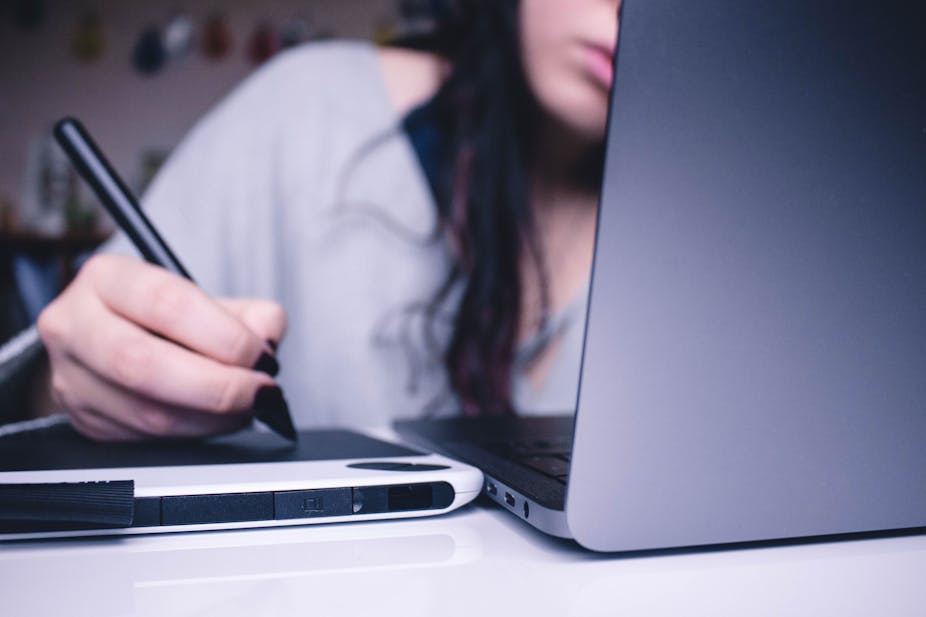In late 2019, Indonesia sought to revolutionise the country’s education system – long criticised for its focus on rote learning – through a series of ongoing policies dubbed the “Merdeka Belajar” movement, or “Freedom to Learn”.
Some programs developed under Merdeka Belajar, such as Sekolah Penggerak (Initiator Schools) collaborate with schools and teachers to promote progressive learning practices, customising students’ experiences, rather than learning everything by sheer memorisation.
However, both supporters and critics have doubts about how the Freedom to Learn mindset will fare amid the rise of digital learning due to COVID-19.
The main problem faced during the pandemic, for instance, has been that many teachers merely moved traditional face-to-face teaching methods online, with disastrous results.
Many of them have not been trained to give students full learning responsibilities within a normal classroom, never mind in an online environment. They have struggled to gain students’ attention over time – through Zoom classes and sometimes only messaging apps. They have found it even more challenging to assess whether students have been learning.
As a result, many teachers have chosen to simply set students weekly assignments to give them room to learn by themselves.
But can they?
As the saying goes, you can lead a horse to water, but you can’t make it drink. Just because students are given the freedom to learn, it does not mean they will.
Read more: In a world of digital bystanders the challenge is for all of us to design engaging online education
Even offline, most students struggle to take control of their learning
Indonesia’s Freedom to Learn movement is not the first of its kind. Norway, for instance, implemented similar policies on customised learning. Its experience may offer valuable lessons.
In 1994, Norway launched Reform94 to give teenage students more control of their learning. The policy focused on regularly giving students more choice and responsibility to work with teachers in designing their learning activities.
However, national evaluations found stronger students possessed sufficient self-motivation to learn by themselves. Most other students did not. The policy’s good intent failed to be realised.
The students had become reliant on teachers deciding what and how to teach.
When online learning surged due to COVID-19, we recognise a similar pattern of students becoming even more isolated and left without guidance.
Even Norway – often regarded as having one of the best education outputs – still faced challenges of knowledge loss and lack of student engagement with repeated waves of local and regional online schooling.
So, in a world where teachers and students grow increasingly distant, how do we get students to take charge of their learning?
Designing an online-first environment
The pandemic has taught us the importance of digital learning environments that are well designed to retain students’ attention. Students won’t bother to actively learn on their own if they’ve already lost interest in the first place.
This requires shorter periods of teaching, combined with similarly shorter periods of practical learning and feedback activities.

For some teachers, this might mean breaking up sessions that usually last for hours into 30-minute bursts of lessons and activities across a week of learning. This way, students get to engage with digital learning resources to learn about DNA, for instance, at their own pace throughout that week.
Practices like these have been long employed in New Zealand’s largest school, called Te Kura, and are cornerstones of a well-designed online learning environment.
Te Kura was founded in 1922. In these pre-digital times, teaching resources and assignments were sent to and returned by students via mail for grading and feedback.
This means that, long before the pandemic, Te Kura had adopted teaching models varying from fully online to face-to-face sessions when required or possible. The learning resources and platform were tried and tested – teachers already knew how to manage the difficult task of engaging students when COVID hit and, with the flick of a switch, they moved fully online.
Connectivism – the clue is in front of us
Moving forward, however, helping students become “digitally connected” to each other and the world around them will be most essential as they take charge of their own learning.
Education psychologist George Siemens explains this best through his theory of connectivism. It’s a concept of learning that involves many at-times-overlapping networks of digital sources for learning and assessment.
This is basically a fancy way of saying that, in an increasingly online world, we learn best through spontaneous and enjoyable acts of reading and consuming information. We could be glancing at news articles, watching TED Talks in our free time, reading e-books on a variety of topics, or even catching up with a colleague or fellow student over Zoom – sources of expertise that have already been accumulated by other people for years.
As these sources offer the opportunity of “any time, any place” learning and teaching, they are ideal teaching methods for any digital learning environment.
It is not enough for Indonesia’s Freedom to Learn movement to merely give room for students to shape their own education. Schools and teachers must also design digital learning environments that are actually able to retain their attention, motivation and drive to learn.


